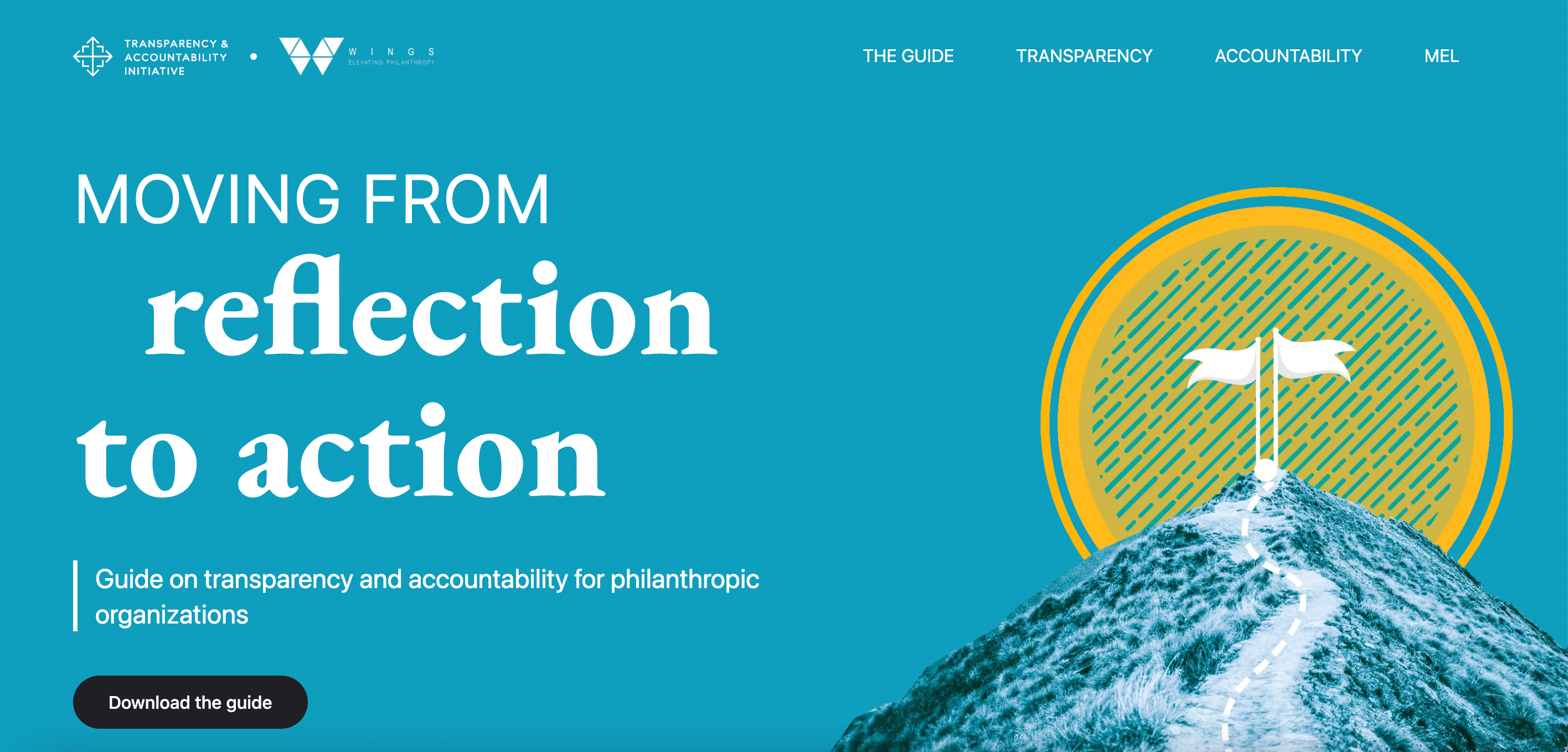This blog was originally published by Wings!
In the eight years since the first edition of the WINGS Transparency and Accountability in Philanthropy and Private Social Investment toolkit was released, debates around accountability in the philanthropic sector have only increased. The staggering wealth of some new philanthropic entrants has prompted new scrutiny. Debates around decolonising philanthropy, calls for spending down endowments and challenging the systems that enable enormous wealth disparities in the first place all prompt necessary reflection on accountability. This year, WINGS, in collaboration with the Transparency and Accountability Initiative, released a new version of the Transparency and Accountability Guide to shed new light on this topic and provide steps that philanthropic organisations of all sizes can follow to start implementing accountability and transparency plans.
We come at this issue from the specific perspective of a collaborative of funders dedicated to promoting greater transparency, participation and accountability of governments and corporations around the world. Our Transparency and Accountability Initiative members see transparency and participation as essential elements for enabling accountability.
So, what if we apply that frame to the philanthropic space?
On the transparency front, recent years have seen mixed developments on the transparency front. While more donors are making efforts to explain their decision-making and build portals of grants – MacKenzie Scott’s Yield Giving site being among the most recent (and most anticipated) – there has also been a significant increase in giving to more opaque donor-advised funds. Corporate giving remains largely in the shadows – only 7.5% of US-based corporate foundations provide categorised grants lists or access to their non-profit tax filings1.
There is a more positive trajectory on the participation front. Recent years have seen the rapid growth of the participatory grantmaking community, especially among funders and feminist funders, and while the volumes of money invested through participatory approaches does still not match the rhetoric, there are more funders experimenting with these approaches. Some are even expanding engagement to their strategy processes – see the case examples in TAI’s curated library of resources on funder Participatory Strategy.
So, is this leading to more funder accountability? At least there are signs of a more nuanced debate. In most contexts around the world, the legal accountability of philanthropic funders is limited to compliance with local tax laws. However, in practice, many have delineated two principal lines of accountability – towards foundation boards and trustees, and towards grantee partners and the communities they serve. Some are starting to disaggregate this further, considering accountability roles across philanthropic entities and their partners. Accountability debates are now as much about grantmaking practice as about impact. The Covid-19 pandemic prompted welcome shifts in the former, for example, to ease reporting burdens and shift to core funding, but at the same time revealed limited means to hold philanthropists to account for promises made during the crisis (such as the more than 350 funders who signed the pledge coordinated by London Funders.)
One phrase that is recurrent across articles and webinars on this topic in the past 18 months is “mutual accountability.” This seems perhaps the most constructive starting point. It is the basis for more trust-based philanthropy. It applies to the range of relationships that ultimately contribute to philanthropic sector-wide accountability, including between programme officer and local partner, between programme director and foundation trustees, and between pooled fund secretariats and representatives of the communities they serve.
What is clear is that despite signs of progress and more vigorous debate, few, if any, philanthropic entities can rest on their laurels. Assuring accountability is always a work in progress. Hence the value of products, such as the Transparency and Accountability Guide, is to prompt reflection, offer inspiration on what can be tried, and help benchmark practice. However, this, too, needs to be a living tool if it is to continue to offer the most practical guidance.
Perhaps most important is providing the opportunity to compare notes and talk through accountability challenges with peers. In TAI conversations, we find it is peer pressure that can be most effective in prompting changes in funder behaviour. Other funder networks are actively discussing these questions. So, it is highly appropriate that WINGS – as a truly global philanthropic network - is the spark and home for this guide. We all have much to learn from fellow philanthropists and philanthropy support organisations across sectors and geographies. Let’s hold ourselves accountable to learn from each other!
We invite you to explore the contents of the Transparency and Accountability Guide on this interactive website where you can quickly navigate through the 10 steps for better transparency and accountability for philanthropic organisations of all sizes.
